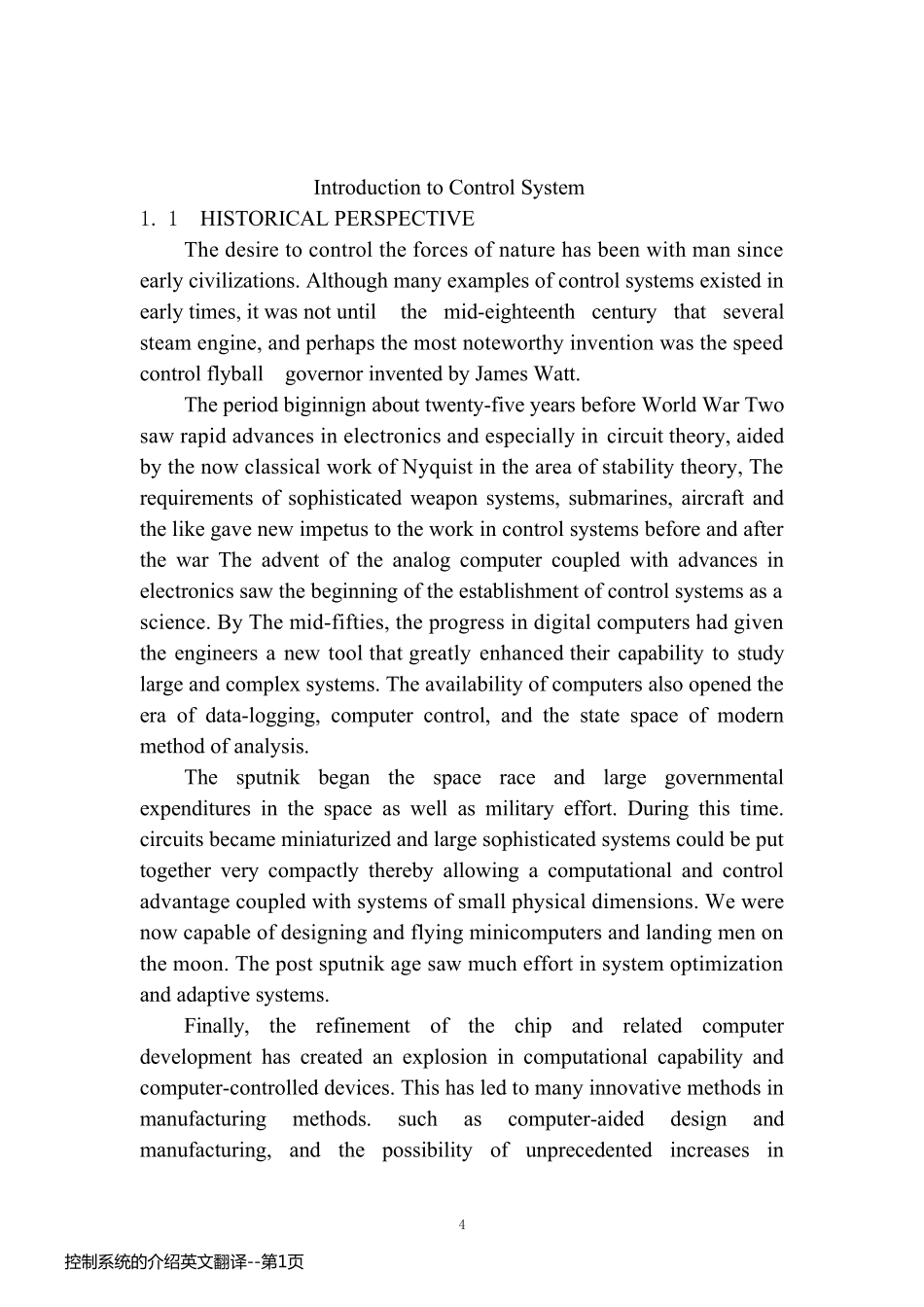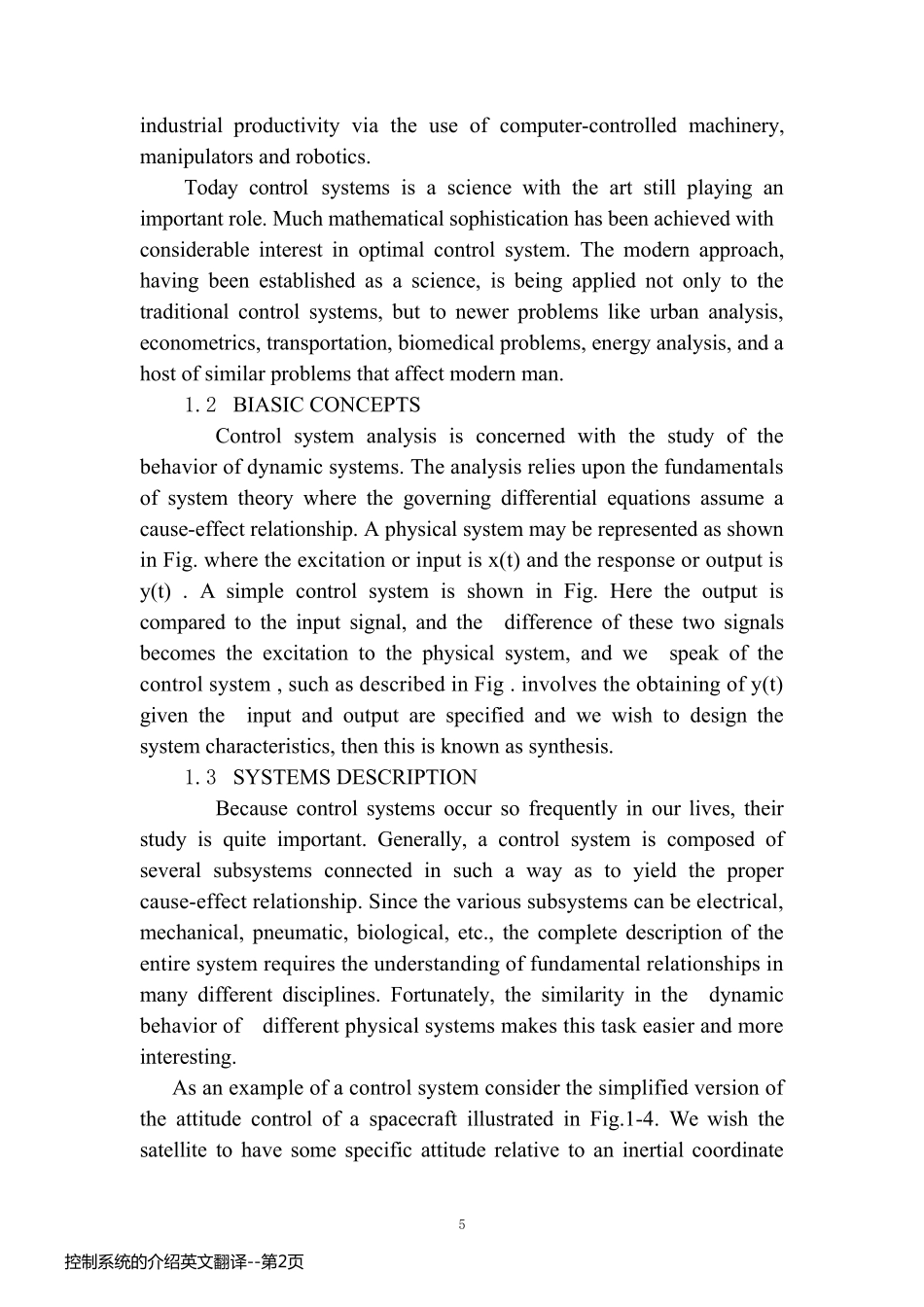4 Introduction to Control System 1. 1 HISTORICAL PERSPECTIVE The desire to control the forces of nature has been with man since early civilizations. Although many examples of control systems existed in early times, it was not until the mid-eighteenth century that several steam engine, and perhaps the most noteworthy invention was the speed control flyball governor invented by James Watt. The period biginnign about twenty-five years before World War Two saw rapid advances in electronics and especially in circuit theory, aided by the now classical work of Nyquist in the area of stability theory, The requirements of sophisticated weapon systems, submarines, aircraft and the like gave new impetus to the work in control systems before and after the war The advent of the analog computer coupled with advances in electronics saw the beginning of the establishment of control systems as a science. By The mid-fifties, the progress in digital computers had given the engineers a new tool that greatly enhanced their capability to study large and complex systems. The availability of computers also opened the era of data-logging, computer control, and the state space of modern method of analysis. The sputnik began the space race and large governmental expenditures in the space as well as military effort. During this time. circuits became miniaturized and large sophisticated systems could be put together very compactly thereby allowing a computational and control advantage coupled with systems of small physical dimensions. We were now capable of designing and flying minicomputers and landing men on the moon. The post sputnik age saw much effort in system optimization and adaptive systems. Finally, the refinement of...

